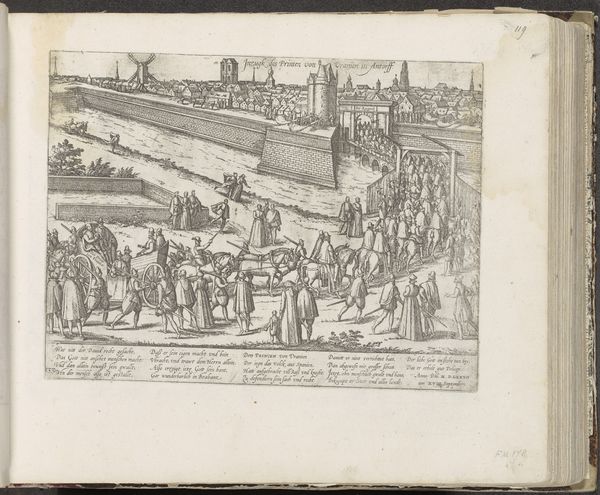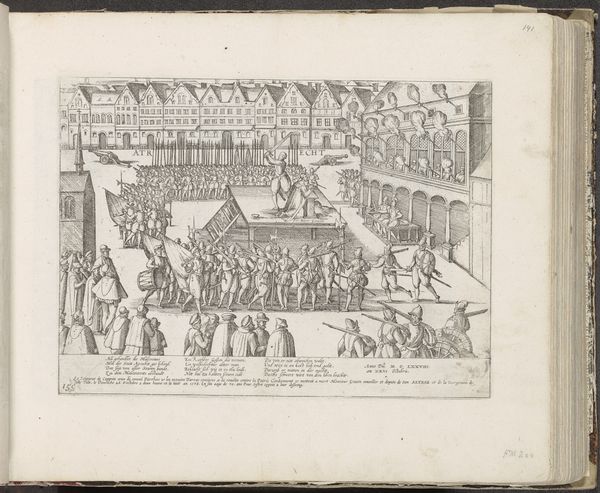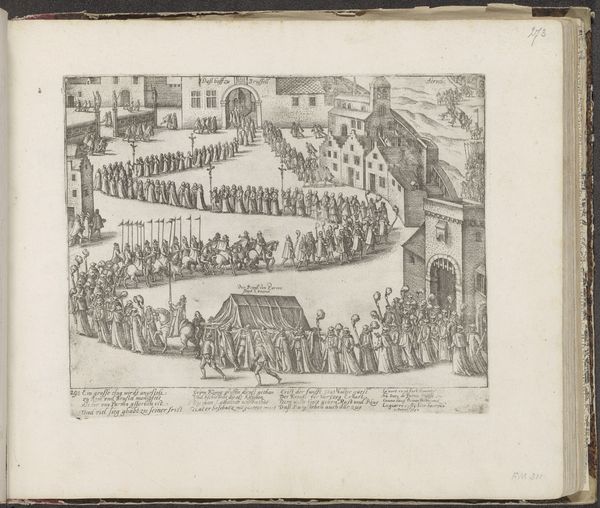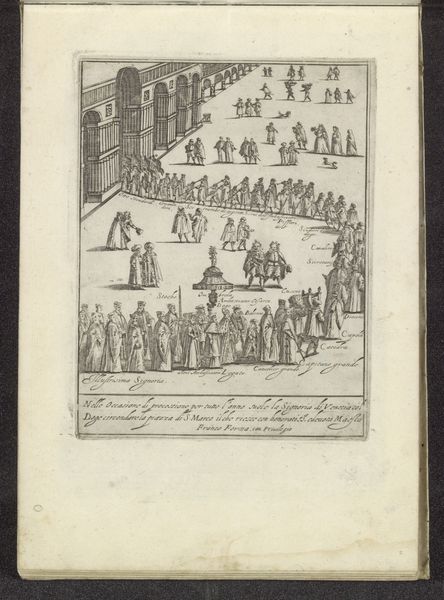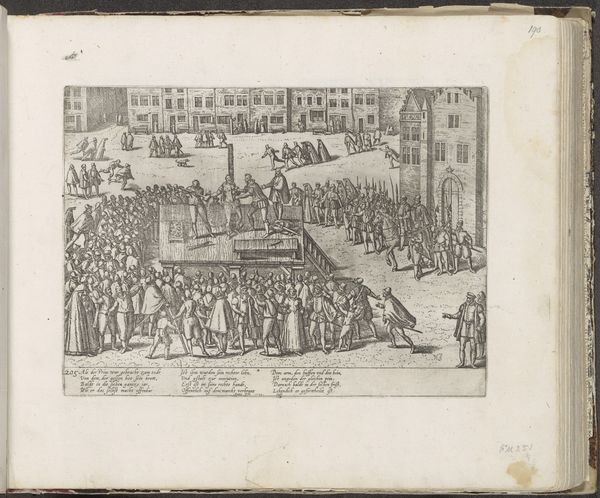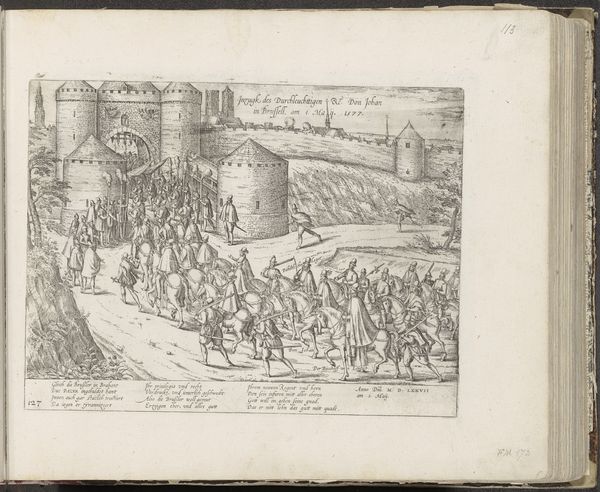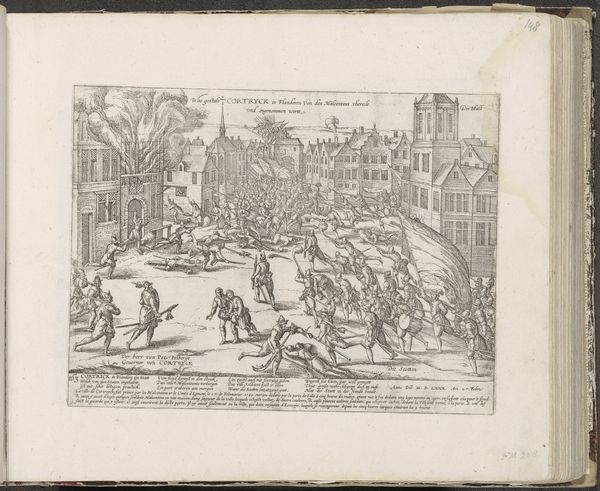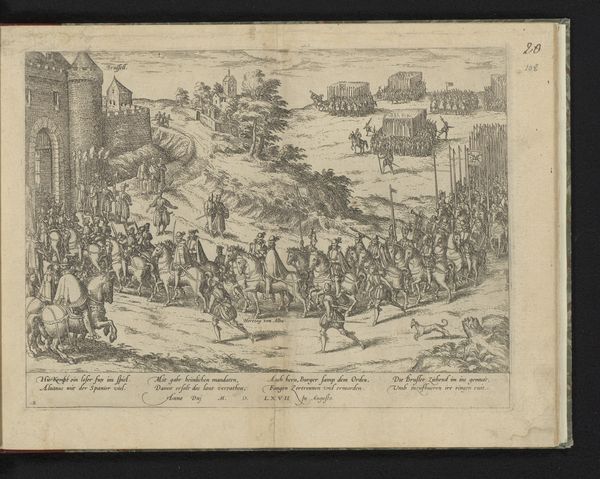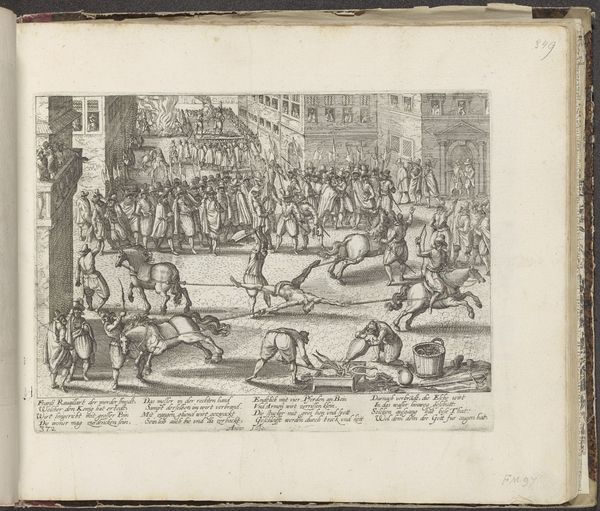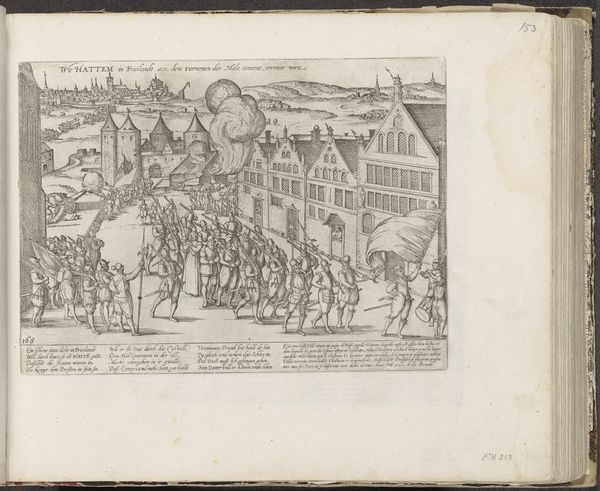
Ontdekking van sodomie in een klooster te Brugge, 1578 c. 1581 - 1585
0:00
0:00
franshogenberg
Rijksmuseum
print, engraving
#
medieval
# print
#
genre-painting
#
history-painting
#
northern-renaissance
#
engraving
Dimensions: height 210 mm, width 277 mm
Copyright: Rijks Museum: Open Domain
Curator: This engraving by Frans Hogenberg, made around 1581 to 1585, is titled "Ontdekking van sodomie in een klooster te Brugge, 1578"—or, "Discovery of Sodomy in a Monastery in Bruges, 1578." It's held at the Rijksmuseum. Editor: My immediate impression is one of harsh judgment rendered publicly. The scene feels stiff and ordered, despite the apparent chaos of the accusations. Everything leads to the monastery gate. Curator: As an engraving, consider the processes involved: the careful cutting of the image into the metal plate, the physical labor, the multiple impressions, and distribution. This wasn't just art; it was a relatively accessible form of news dissemination in its time. Hogenberg, a printmaker and publisher, used these methods to document and editorialize on contemporary events. Editor: The symbolism here is layered, isn’t it? A public procession carrying... planks, are they? Then the expulsion through the gate... What’s emphasized here is the collective, the community turning against these individuals. Are those planks meant for... punishing or parading? And why the figures already outside? Curator: The planks are very likely connected with the punishment of those found guilty. Consider the cultural context, and how such objects become extensions of the social body, implements of enforcing norms. Notice how some figures outside appear almost gleeful; consider also the engraver’s hand – they decided how to present these objects and actions for later consumption. Editor: The stark black and white underscores the morality play, doesn't it? Good versus evil, light versus dark. And it really highlights the architectural features; that imposing monastery acts almost as another figure. Curator: It invites analysis. The precise lines and the detail – look at the clothing, the architecture – reveal so much about the modes of production in Hogenberg’s era. And it connects to debates about iconoclasm as well; printed images held real power during this period. Editor: This single image opens so many doors into understanding not only the event itself, but how collective memory was shaped through visual symbols and public spectacle. Curator: Indeed. Thinking about this piece forces us to examine not just the act it depicts, but the role of the printed image in shaping opinions and directing social change. Editor: Precisely; a confluence of fear and religious zeal captured in a few well-placed lines, endlessly reproducible.
Comments
No comments
Be the first to comment and join the conversation on the ultimate creative platform.
